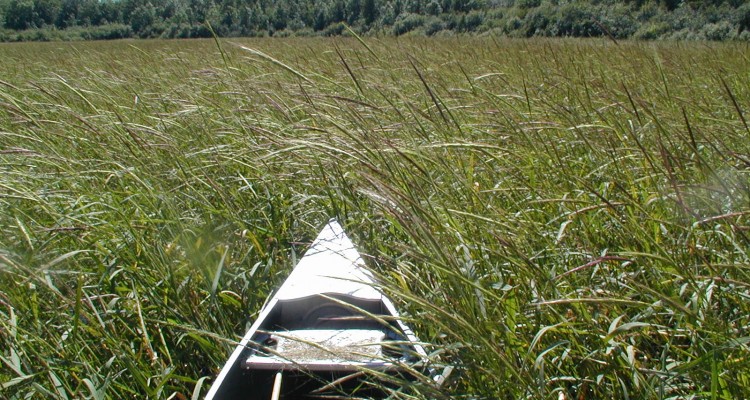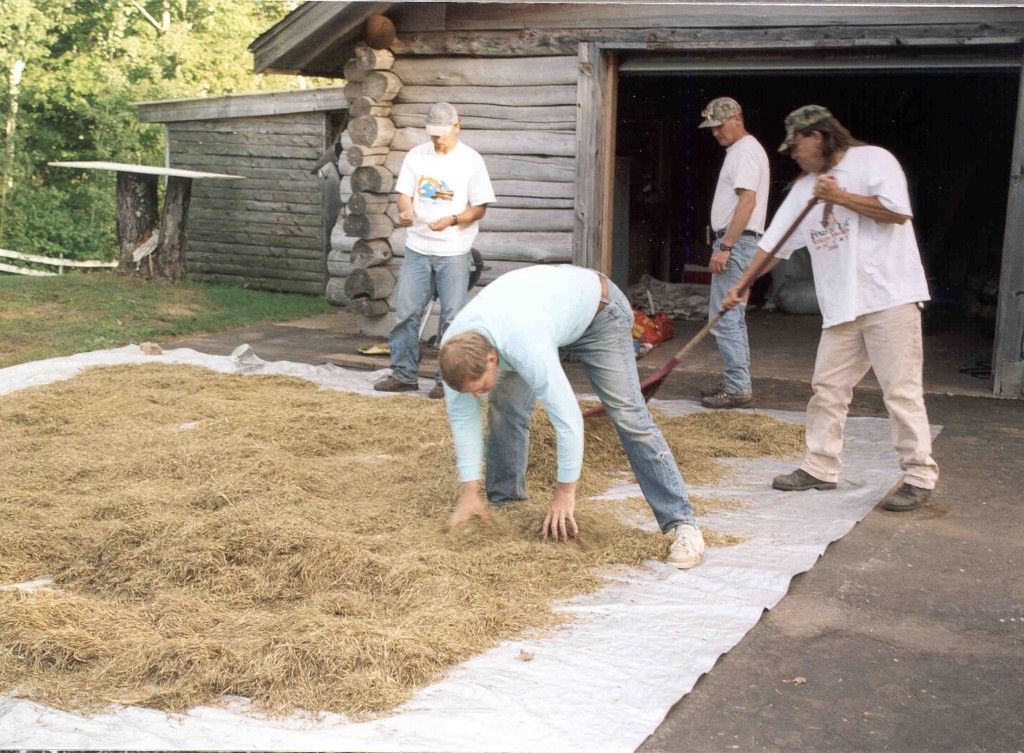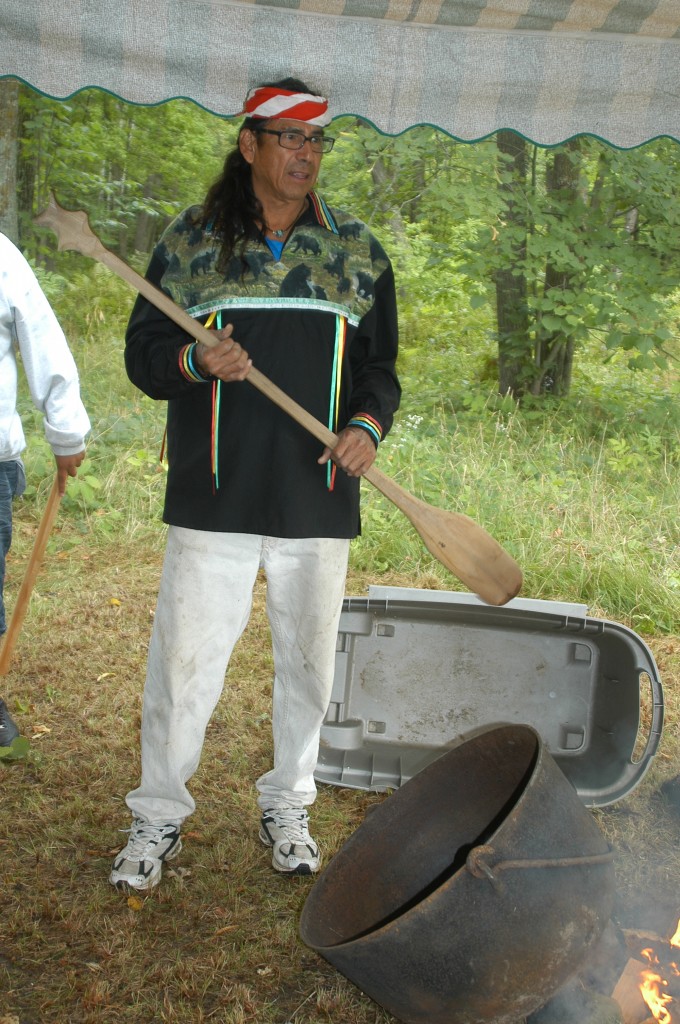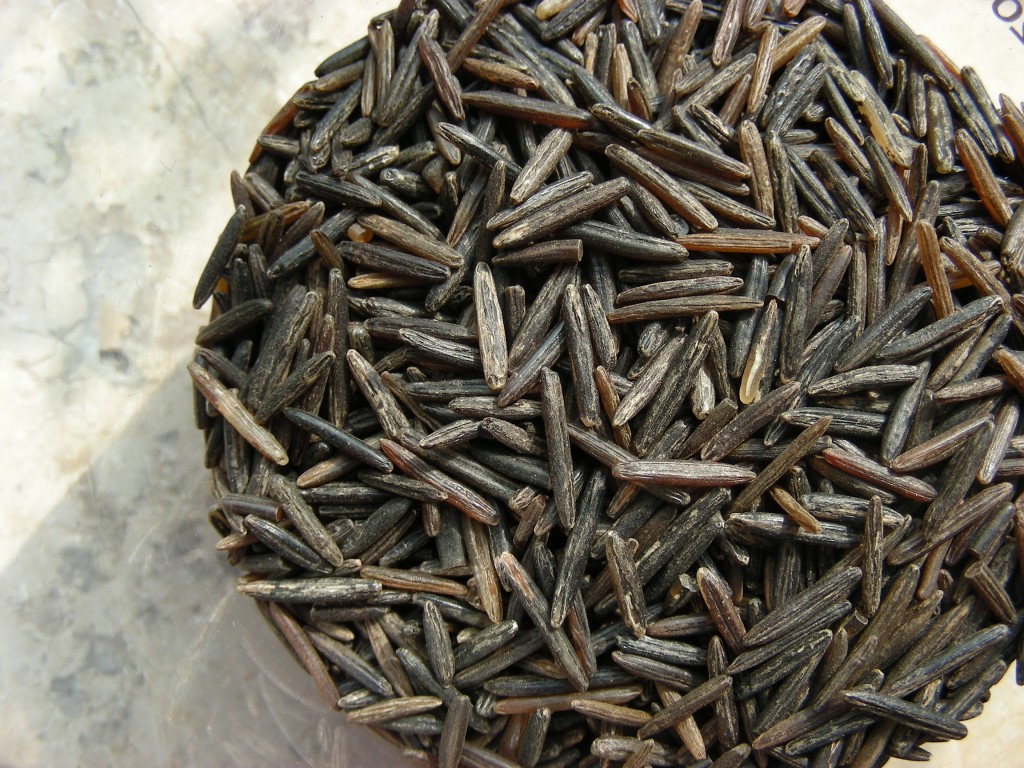Harvesting manoomin, “the food that grows on water,” has a long harvesting process concentrated on heavy labor. This is a short guide on how wild rice is harvested in the Bad River Band reservation in northern Wisconsin. The wild rice harvested in the Kakagon Bad River Sloughs is like no other due to the unique richness of the rice beds.
Step 1: Knocking
Knocking is done in pairs at the Kakagon Bad River Sloughs. One person with good balance stands in the canoe and holds a long pole with both hands. The pole is used to travel through the rice beds in order to prevent damage to them. Motor boats should never travel through these rice beds. Attached at the end of the pole is a plastic or wooden shaped duck bell. The other person sits in the canoe holding ricing sticks — called knockers — made of cedar. They bend and tap the green stalks, knocking the ripe rice into the canoe. The person knocking the rice places the wet, green rice into a bag from the canoe.
Step 2: Drying
Depending on the state of the wild rice, one can either leave the wet wild rice for a day so it can continue to ripen or lay it out to dry with the sun. If it is not laid out to dry, one runs the risk of the wild rice molding quickly. Wild rice harvesters are aware that as their manoomin dries and with each step of the process, the quantity of the wild rice also reduces.
Step 3: Parching
After drying the rice, the rice needs to be processed. At this point, some people do not know how to continue the process so they take it to someone in the Bad River community who is highly skilled in processing wild rice. This person usually takes a certain percentage of the wild rice they process instead of receiving monetary compensation.
Parching or roasting is the next step. The person processing first places the rice in a kettle on top of a fire. They constantly turn the rice while the fire burns. Originally, people used tightly woven mats on top of the fire, but with European contact, iron kettles were acquired through trading. This process helps remove germs and reduces the moisture in wild rice. This process also allows people to preserve the grains for future consumption.
Step 4: Hulling
Hulling helps loosen the hull, or chaff, on the manoomin. This process is done with a person wearing knee high, un-beaded moccasins as they “dance” on the manoomin. The moccasins protect the person from getting scratched by the hulls of the wild rice. Originally, people dug a hole in the earth and covered it with deerskin. Today, it is more common for people to use wooden or metal buckets. Strong legs are helpful when treading wild rice. For assistance, hullers use two poles for balance and to prevent too much weight from falling on the wild rice.
Step 5: Winnowing
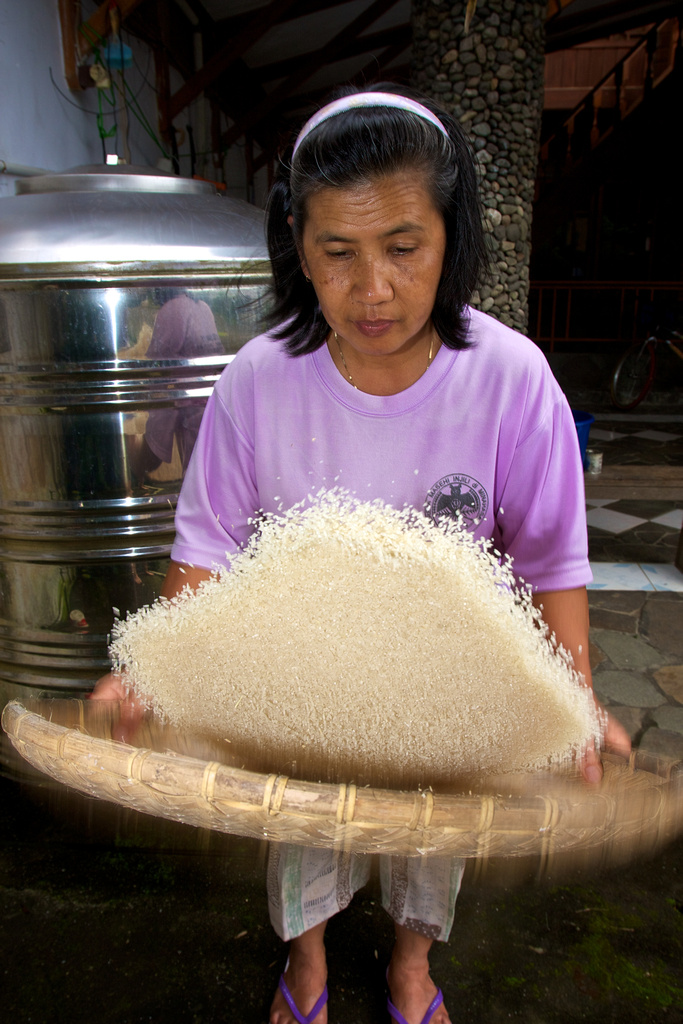
Creative Commons/Daniel Peckham This picture gives the idea behind winnowing wild rice. However, this picture shows a woman winnowing white rice in Indonesia.
Wind is used in order to take the chaffs off the manoomin. Before the Europeans arrival, a birch bark tray was heated, cut, folded, shaped and covered with basswood fiber. The rim was placed at the edge of the tray made of ash and a covering of some sort was placed on the ground. Today, it is more likely for people to use a winnowing basket. In both processes people toss the manoomin in the air, the wind blows the chaff away, while the wild rice kernels fall back in the winnowing basket. People do this until all the chaffs from the manoomin fall off. After cleaning the wild rice, it is ready to be stored or cooked.
This guide and information is from the Great Lakes Indian Fish & Wildlife Commission.


